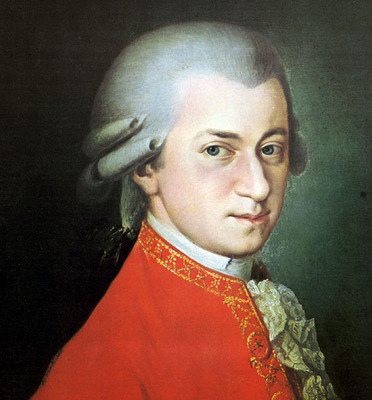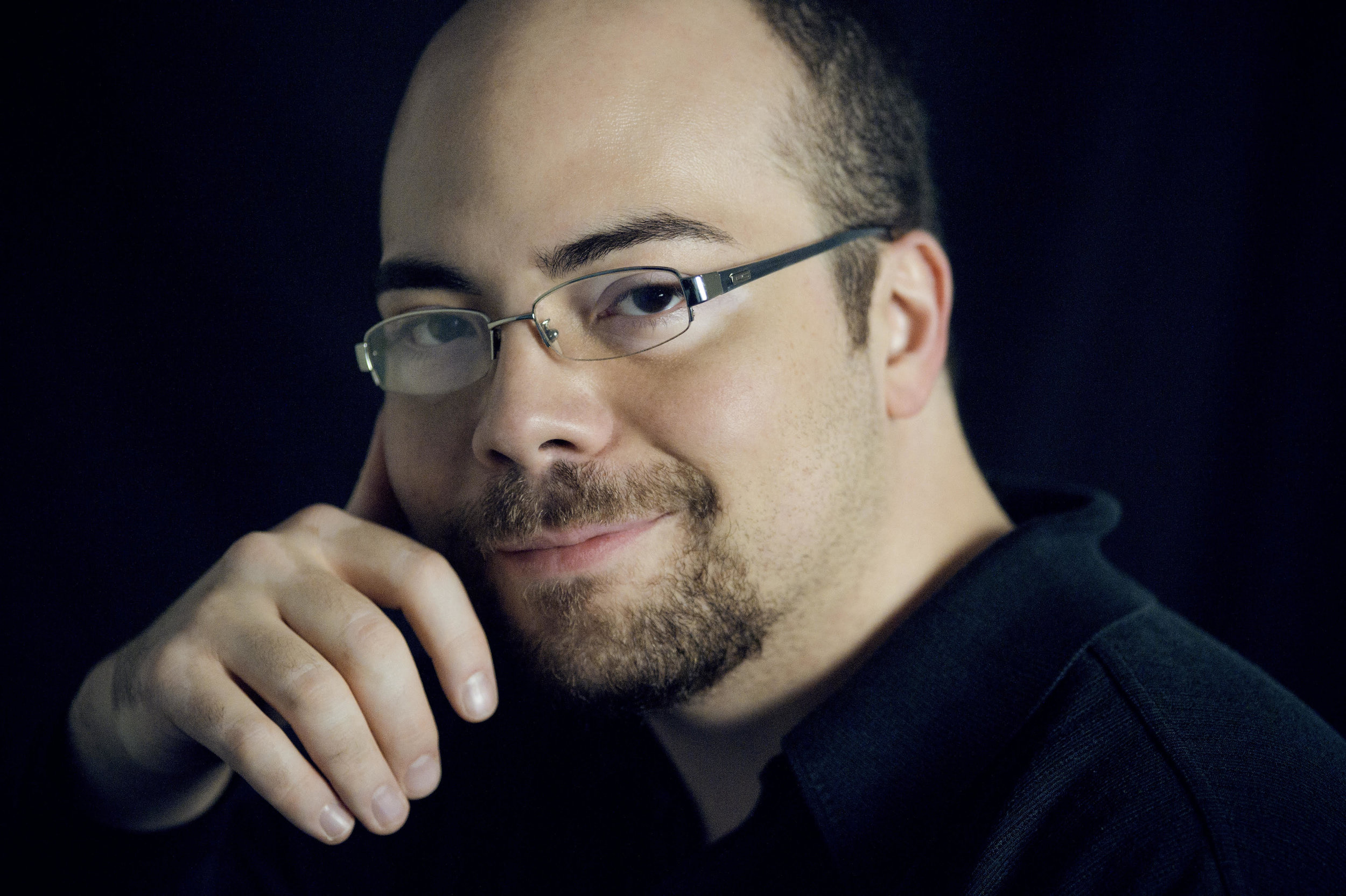Guzman Plays Mozart
Sunday, January 19, 2020
3 pm - Penn State Recital Hall
Concert Sponsor: Nancy Eaton
Guest Artist Sponsors: Gary Bontrager & Arthur Curtze
PROGRAM
Overture: Coriolan, Op. 62 Ludwig van Beethoven (1770 – 1827)
Piano Concerto No. 20 in D Minor, K. 466 Wolfgang Amadeus Mozart (1756 – 1791)
Christopher Guzman, piano
Allegro
Romanze
Allegro assai
--- intermission ---
Symphony in C Major Georges Bizet (1838 – 1875)
Allegro vivo
Andante - Adagio
Allegro vivace
Finale: Allegro
Program Notes
Beethoven knew and admired the works of Shakespeare, but his Coriolan Overture was not inspired by the Bard’s Coriolanus. He composed it for a play by Matthäus von Collin that had enjoyed a brief success in Vienna from 1802–1805. Originally the play was performed with music adapted from Mozart’s Idomeneo. Beethoven apparently admired Collin’s tragedy and the author was, in any case, a friend of his and an influential one at that since he served as Imperial Court Secretary.
The year of composition is 1807 and we know that the overture had been performed by March of that year at two subscription concerts given at the palace of Prince Lobkowitz. The program of the two subscription concerts sponsored by Lobkowitz included Beethoven’s first four symphonies, a piano concerto, arias from Fidelio, and the new Overture.
The Overture must have made a strong impression, because by April 24 the management of the Imperial Theater mounted a single performance of Collin’s drama, using Beethoven’s Overture, so as to unite the play with the music that it inspired. It is most likely that this happened at the suggestion of Prince Lobkowitz himself, who was a director of the theater.
It appears that Collin’s play has not been performed since but Beethoven’s Overture, recognized from the first as being “full of fire and power,” is one of his most admired short orchestral works.
The themes the overture follow the play generally. The main theme represents Coriolan’s resolve and war-like tendencies He is about to invade Rome, his own homeland, having abandoned his country to fight for the enemy Volscians. The more tender and melodic second theme represents the pleadings of his mother to desist and repent. Coriolan eventually gives in to tenderness, but since he cannot turn back, having led an army of his former enemies to Rome's gates, he takes his own life. The overture’s conclusion describes the scene as the spirit leaves Coriolan’s body. (In the play Coriolanus by William Shakespeare he is murdered.)
While visiting Vienna in 1875, Leopold Mozart first heard his son’s new concerto in D minor, and he wept for joy. During this visit Leopold was constantly regaled with fresh evidence of Wolfgang’s genius. He reported in a letter to his daughter Nannerl, that Joseph Haydn had visited and had declared, “Before God and as an honest man, I tell you that your son is the greatest composer known to me.”
Mozart was 29 years old when he composed Piano Concerto No. 20. By the mid-1780s, Mozart had begun to gravitate increasingly toward composing opera, which had long been his dream. His style also began to change as Jeremy Siepmann has commented, much of his music “was increasingly difficult to play, thereby discouraging the amateur; there was a darkening and intensification of its character and a new daring in its harmonies.”
The ink on the score was still wet when Mozart premiered his new concerto at a subscription concert in the Mehlgrube in Vienna on February 11, 1785. Intense, dramatic, and stormy, the three-movement concerto is Mozart’s first in a minor key and the Viennese aristocrats who made up most of his local audience were stunned. They expected to be charmed and enticed, not ravished and ravaged.
It is no surprise that the Romantics became the most fervent advocates for Piano Concerto No. 20, thanks to the young Ludwig van Beethoven, who performed the work in March of 1795 at a benefit concert for Mozart’s widow and surviving children.
Beethoven composed two cadenzas for that occasion, and they are still performed routinely. Mozart’s own cadenzas are lost to time, probably because he hadn’t bothered to write them down. Many worthy pianist-composers have risen to the challenge of providing cadenzas for this concerto including Johannes Brahms, Charles-Valentin Alkan, Johann Nepomuk Hummel and Clara Schumann. From the extensive list of possibilities our soloist, Christopher Guzman, has chosen Carl Reinecke’s cadenza for the first movement, and Ferruccio Busoni’s cadenza for the third movement
Georges Bizet, the offspring of two talented musicians was extremely precocious in musical matters. He was admitted to the Paris Conservatoire at the age of nine and was winning prizes there within a year. He produced his earliest known works, two vocalizes for soprano, at age twelve.
Bizet studied at the Conservatoire until he was nineteen, gathering awards for piano, organ, fugue and solfeggio*, and composing a variety of works, one of which was a prize-winning operetta in a competition sponsored by Jacques Offenbach. At nineteen, he won the Prix de Rome, which provided a five-year stipend, a residency in Italy and France, and the opportunity to devote his time to study and composition. The years of planning, composing and travel came to an end when his prize stipend expired.
At the age of 24 he was faced with the reality of providing his own living. After 1863, Bizet gave much of his time to all manner of musical hackwork: private teacher, rehearsal accompanist, music critic, but mostly to transcribing the popular pieces of the day for a variety of instruments. “It is maddening to interrupt the work I love for two days in order to write cornet solos. Still, one must live!” he lamented. From these later years we have the works for which he is mainly remembered: The Pearl Fishers, Jeux d’enfants, the incidental music to L’Arlésienne and the opera Carmen. Bizet died at age 36, before he knew that Carmen would make his name famous around the world.
Bizet’s Symphony in C, written in his seventeenth year, is a marvel of early musical maturation that rivals the precocity of Mozart and Mendelssohn. It is a work in which the composer exhibited his careful study of Haydn, Rossini and Gounod. Gounod was Bizet’s counterpoint teacher whose own First Symphony had appeared only a year earlier.
It seems the symphony was not performed during Bizet’s lifetime. The manuscript became part of his estate after his death and was given into the possession of his wife, who did not fully appreciate her husband’s genius. She bequeathed it to the composer Reynaldo Hahn, and he to the Paris Conservatoire Library, where it gathered dust until Bizet’s first English biographer, D.C. Parker, unearthed it in 1933.
The symphony was finally premiered on February 26, 1935 in Basel, Switzerland by conductor Felix Weingartner. The Symphony in C opens with a bubbling main theme outlining chordal patterns and a contrasting legato second theme, introduced by the oboe. The slow second movement contains a haunting, bittersweet serenade for oboe followed by a soaring melody for strings. The final two movements are a sprightly scherzo with a rustic-sounding trio, and a vivacious finale.
* “solfeggio” or “solfa,” is a system where every note of a scale is given its own unique syllable, which is used to sing that note every time it appears. A major or a minor scale (the most common scales in Western classical music) has seven notes, and so the solfege system has seven basic syllables: do, re, mi, fa, sol, la, and ti.
Program notes by Conductor Laureate, Douglas Meyer.





